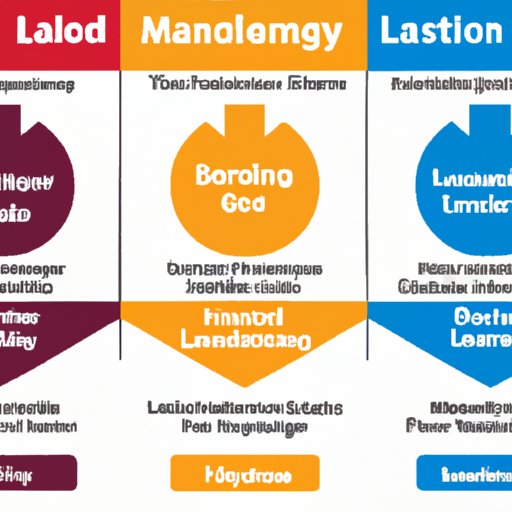Introduction
Leadership is an essential component of any successful organization or team. It is the process of motivating, inspiring and guiding individuals in order to achieve a common goal. Leaders are able to motivate their followers by setting a clear vision, creating a positive environment and providing direction and guidance. There are many different leadership styles that can be used in organizations, but there are four basic leadership styles: autocratic, democratic, laissez-faire and transactional.
Exploring the 4 Basic Leadership Styles – A Guide for Understanding Different Types of Leaders
Autocratic leadership involves one person making decisions without input from others. This type of leader has complete control over the decision-making process and does not involve their team in the decision-making process. Autocratic leaders typically have a high degree of authority and tend to be very directive, often issuing orders rather than suggestions. They are also highly task-oriented and do not take into account the feelings or opinions of their team members. This type of leadership is most effective in situations where quick decisions need to be made and tasks need to be completed quickly and efficiently.
Democratic leadership involves involving the team in the decision-making process. This type of leader encourages input and feedback from their team and values their opinions. Democratic leaders are more likely to delegate tasks and allow team members to make decisions themselves. This type of leadership is most effective in situations where creativity, problem solving and collaboration are needed.
Laissez-faire leadership involves a hands-off approach to managing. This type of leader allows their team to make decisions and take responsibility for their own actions. Laissez-faire leaders provide minimal direction and guidance and prefer to let their team figure things out on their own. This type of leadership is most effective in situations where team members have the knowledge and experience to handle tasks independently.
Transactional leadership involves setting expectations for team members and rewarding them for meeting those expectations. This type of leader sets clear goals and rewards team members when they meet those goals. Transactional leaders are focused on results and performance and tend to be more directive in their approach. This type of leadership is most effective in situations where there is a need for structure and accountability.

The 4 Essential Leadership Styles: How to Identify and Implement What Works
When it comes to identifying and implementing the right leadership style, it is important to assess your current leadership style and determine which style would be most effective in a given situation. Consider the strengths and weaknesses of each style and decide which style would be best suited to the task at hand. It is also important to develop a plan for implementation, including setting clear goals and expectations and providing feedback and support to ensure success.

Harnessing the Power of the 4 Basic Leadership Styles
Each of the four basic leadership styles has its own unique benefits. Autocratic leaders are able to make quick decisions and get tasks done efficiently. Democratic leaders foster creativity and collaboration. Laissez-faire leaders allow team members to take responsibility for their own actions. Transactional leaders create structure and accountability. To harness the power of these leadership styles, it is important to identify which style is best suited to the task at hand and develop a plan for implementation.
Successful Leadership: What Are the 4 Basic Leadership Styles?
Every leader has their own unique set of strengths and weaknesses, so it is important to be aware of the advantages and challenges associated with each of the four basic leadership styles. Autocratic leaders can be seen as authoritarian and may not foster a sense of trust or loyalty. Democratic leaders may struggle with delegation and creating a sense of ownership among team members. Laissez-faire leaders may lack structure and direction, which can lead to confusion. Transactional leaders may be too focused on results and fail to recognize the importance of relationships.
4 Key Leadership Styles Every Manager Should Know
As a manager, it is important to understand the different types of leadership styles and how to work with different types of people. Adaptability is key when it comes to leadership, as different situations may require different styles of leadership. For example, in a situation where quick decisions need to be made, an autocratic style of leadership may be most effective. In a situation where creativity and problem solving are needed, a democratic style of leadership may be more appropriate.

Finding Your Leadership Style: The 4 Basic Leadership Styles
The key to successful leadership is finding the right balance between the four basic leadership styles. Evaluating your own strengths and weaknesses is a great place to start. Consider the types of tasks at hand, the personalities of the people you are working with and the overall goals of the organization. By applying the right leadership style in different situations, you can become an effective and successful leader.
Conclusion
The four basic leadership styles – autocratic, democratic, laissez-faire and transactional – all have their own unique strengths and weaknesses. As a leader, it is important to assess your current leadership style and determine which style would be most effective in a given situation. By understanding the advantages and challenges of each style and developing a plan for implementation, you can become a successful leader who is able to work with different types of people and adapt to change.
Key Takeaways:
- Leadership is the process of motivating, inspiring and guiding individuals in order to achieve a common goal.
- There are four basic leadership styles: autocratic, democratic, laissez-faire and transactional.
- It is important to assess your current leadership style and determine which style would be most effective in a given situation.
- By understanding the advantages and challenges of each style and developing a plan for implementation, you can become a successful leader.
(Note: Is this article not meeting your expectations? Do you have knowledge or insights to share? Unlock new opportunities and expand your reach by joining our authors team. Click Registration to join us and share your expertise with our readers.)
